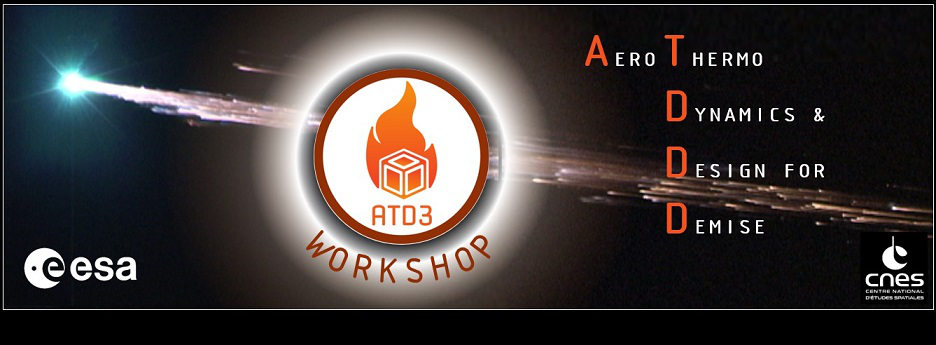Speaker
Description
Composite materials like Carbon Fibers Reinforced Polymer (CFRP) are used in the manufacturing of components for satellites or launcher upper stages. Those materials behave similarly to thermal protection ablators hence show a strong resistance when exposed to high enthalpy flows. For instance, Composite Overwrapped Pressure Vessel (COPV) have been shown to survive the harsh atmospheric entry. This component is made of a metallic liner wrapped by CFRP. During the atmospheric entry, the part will be exposed to a high enthalpy flow which will progressively pyrolyze the resin of the CFRP, then erode by thermo-chemical phenomena the remaining carbonaceous residue together with the carbon fibers and finally melt the liner if the heat load is sufficient. High fidelity models for low density porous composite materials have been developed in recent years and their extension to CFRP is investigated in this paper. In particular, a unified numerical approach which solves the flow through and around the degrading porous material is considered. Volume averaging theory is used to described macroscopically the flow through the reactive porous medium and derive a single set of equations valid in the whole computational domain. This allows to capture with high accuracy the gas-surface interaction. This methodology has shown its advantages to predict the response of low density porous material but its extension to very dense composite material such as CFRP presents several numerical challenges that will be discussed. The high fidelity models are implemented in the high-order Discontinuous Galerkin code Argo which coupled with the Mutation++ library.
An experimental campaign is designed and performed inside the inductively coupled Plasmatron facility to validate the modeling and numerical prediction. Previous CFRP tests on coupons have shown that delamination of the fibers once the resin is completely pyrolyzed lead to overprediction of the demisability of the component. To avoid this phenomena, the sample is manufactured similarly to COPV. The scaled tank sample is then exposed to relevant atmospheric entry conditions in the Plasmatron facility. A first batch of CFRP tank shape sample have been tested and the material response reproduced numerically. The scaling down of real COPV leads to strong constraints for the manufacturing capabilities and affects the quality of the wrapping. A second batch of sample releasing those constraints is currently being manufactured and will be tested. The paper will present the experimental setup and measurements techniques for both campaign. The results of the experimental campaigns will be discussed and compared with preliminary numerical reproduction.

